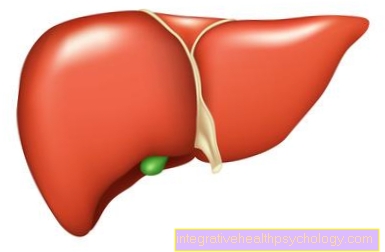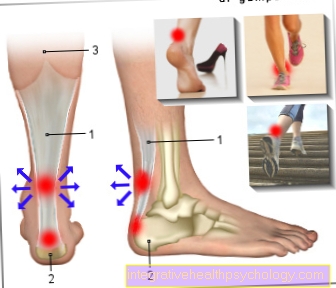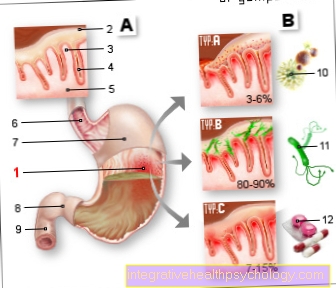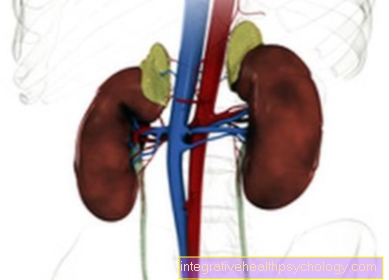Heart rate training
introduction

The training control via the heart rate of our body is a very widespread means and is very important especially at the beginning of an athletic career. As a beginner you do not yet have the necessary body awareness to be able to assess how high the load may be in order to train the body.
Training control
The aim of a training course can be of different origins. Many people start exercising in order to lose body fat and get fitter. Endurance training and cardiovascular training are also objectives that can be optimized using the heart rate control. The training areas can be easily determined using a formula.
As a basis for determining the training heart rate (THF) are the maximum heart rate (MHF) and the heart rate at rest (HF at rest). The formula 220 minus age = MHF is widely used and should be used by experienced athletes. Beginners should replace the 220 with 180. When determining the training heart rate, you specify a lower and an upper limit to which you can orient yourself during training. This limit varies depending on age, fitness level, gender and training goals you have set yourself. The more parameters you include when calculating the THF, the more precisely you can determine the THF.
Calculation of the parameters
The following formula is used to calculate the training heart rate: THF = [(MHF - HR at rest) x intensity] + HR at rest. Now you can differentiate between the intensity according to the training goal. If you want to boost fat loss through training, the intensity should not be quite as high and with it approx. 60 - 70% of the MHF expire. Therefore one adds to the formula for Upper limit at intensity 0.7 for 70% and at the Lower limit 0.6 for 60% a. Upper limit of THF = [(MHF - HR at rest) x 0.7] + HR at rest. Lower limit of THF = [(MHF - HF at rest) x 0.6] + HF at rest.
Anyone who has set themselves the goal of improving endurance as a training goal must now enter different values for intensity. Endurance training should be included 70% to 85% of the MHF occur. For this reason, the formula for the Upper limit 0.85 for 85% and with the formula for that Lower limit 0.7 for 70% can be used. Upper limit of THF = [(MHF - HR at rest) x 0.85] + HR at rest. Lower limit of THF = [(MHF - HF at rest) x 0.7] + HF at rest. These formulas can, however, be adjusted further in order to obtain even more precise values for the training heart rate. Depending on Fitness level (FZ), Endurance range (FROM) or gender (G) can multiply the result by the respective factor (x FZ, x AB or x G).
The variable for the Fitness level (FZ) differs in Beginner (x 1.0), Trained (x 1.03) and Competitive sports-oriented (x 1.06). These values result from the fact that a beginner should not yet work with too high a THF, otherwise an overload could set in. The trained person with a value of 1.03 is already used to higher loads and can therefore train with a higher THF. In competitive sports, the training stimulus must be high so that there is still any improvement. Therefore the value 1.06 is used here.
When choosing the Endurance range (FROM) one differentiates the Basic endurance 1 with the Value x 1.0 that is multiplied Basic endurance 1-2 those with the Value x 1.1 is multiplied and the Basic endurance 2with the Value x 1.2 is multiplied. These differences arise from a training science point of view and reflect the different types of endurance that humans can achieve.
The variable gender (G) differs between men and women. Since the same requirements (physical and biological) do not apply here, the man with the Factor x 1.0 multiplied and the woman with the Factor x 1.06.
With these formulas and parameters you can determine and limit your THF fairly precisely. However, one should keep in mind that these formulas are not the optimal method to determine your THF exactly. There every person has different requirements that cannot be included in a formula, professional advice from a sports doctor should not be excluded from the outset.
Training effectiveness
Just the subject Overload is not entirely unimportant. You should know how to distinguish between what is good and what is bad. To optimal Training effectiveness a certain training stimulus is necessary to achieve this. This stimulus is most effective when one briefly at the upper limit of the THF is working. Only then can new capacities be created and performance increases. However, if you train your body continuously or for too long in the area of overload, you must expect a drop in performance and increased susceptibility to injury.
Generally you should from the age of 35 or with chronic diseases at a Check out doctor to let before contacting his MHF dares. A performance diagnosis with determination of the anaerobic threshold is therefore always useful and only recommended for determining the training intensity. A large part, approx. 80% of the training should be in aerobic area expire. In this area the oxygen is still sufficient to provide energy for the stress. The others 20% of the training find in anaerobic area instead, in which the oxygen is no longer sufficient for energy production and the body takes on an oxygen debt by producing lactate.
To explain the aerobic and anaerobic stress zones, one should also look at the other zones. In addition to the zones mentioned above, there are also those Health zone, the Fat burning zone and the red zone. The division of the zones is based on the maximum heart rate (MHR).
Health zone
In the health zone, above all, the circulation is strengthened and prepared for future higher loads. In the health zone is at 50 to 60% of the MHF trained and it is therefore very good for Beginner on.
Fat burning zone
The next higher zone is the fat burning zone in the at 60 to 70% of the MHF is trained. The name comes from the fact that this zone is where most of the calories are burned from fat. In addition, the cardiovascular system is trained.
aerobic zone
The aerobic zone is the last zone in which there is sufficient oxygen and the body is not responsible for oxygen. The intensity is here with 70 to 80% of the MHF, carbohydrates and fats are used to generate energy and Cardiovascular system, Lungs and metabolism are optimized.
anaerobic zone
The intensity in the anaerobic zone is at 80 to 90% of the MHF and now, slowly but steadily, more and more lactate is being produced, as the body can no longer provide enough oxygen for energy production. In anaerobic training, the main thing is to build muscle mass and strength.
red zone
The highest stress range of the heart rate is the red zone. The exercise intensity is 90 to 100% of the maximum heart rate. This heart rate range should not be reached too often, as the stress on the body is very high. This area is dangerous for beginners and heart damage can occur. Do you train too often in the MHF department? it can lead to permanent overload come to that then Performance drops, Injuries and Health damage being able to lead.





























